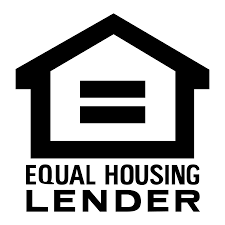How Much of a Mortgage Payment Goes to Principal
Principal and interest are the two components that make up a mortgage. The principal is the amount borrowed; interest is the payment for the debt. The portion of the monthly mortgage payments that go to the principal varies depending on the loan. Along with these components, additional expenses involved in a mortgage include taxes, insurance, and other fees.
In this finance article, find out more about what constitutes a mortgage payment, including loans, house-related costs, taxes, and other associated expenses. Keep in mind that a mortgage calculator can be a helpful tool to assist you in understanding the value of your mortgage principal and savings.

What Is the Principal of a Mortgage Payment?
The principal is the amount borrowed when you took out the home loan. It is determined as the home's selling price minus the down payment. Mortgage lenders assess the cost of the house and the potential borrower's financial status to determine the loan amount while also considering the loan-to-value (LTV) ratio to calculate possible PMI requirements. The purchase is then completed with the help of an escrow process.
The principal is the deciding factor in how much one can afford. For example, if you qualify for a $300,000 mortgage, that is the principal. As soon as you take out the mortgage, it begins accumulating interest at an agreed rate.
In this case, mortgage rates depend on several factors the mortgage lender considers. During this time, homeowners must also pay for homeowners insurance, property taxes, and possibly mortgage insurance, which contributes to the total cost of homeownership.
What Is the Interest on a Mortgage Payment?
When taking out a loan, the interest is the amount the lender charges for using their service. Most creditors will calculate mortgage interest rates through APR (annual percentage rate). APR is the loan's interest, including annual fees.
For instance, the $300,000 mortgage at an APR of 5% would be $15,000 annually. Property taxes and insurance premiums are also part of the overall expenses related to the mortgage.
How Does Interest Affect the Total Paid Over the Life of the Loan?
Over time, your interest payment will decrease while your principal will increase, building equity in your house. Let's say a $300,000 home loan has a fixed-rate, 30-year mortgage at 3 percent. The payments will be $1,264.81. The first payment, $749.81, will cover the interest, while $515 goes toward the principal.
However, by year 20 of the mortgage, the principal will be higher than the interest. While the payments stay the same (on a fixed-rate mortgage), the money going toward the principal increases across the life of the loan.
How Does the Principal Affect the Interest?
Although several factors (credit score, work history, etc.) influence it, a general rule is that the higher the principal, the higher the interest. That is because lenders take on higher risk when they lend more money and want ample compensation.
The more secure a loan, the less interest. So higher down payments, good credit scores, and solid work history will lower interest rates when applying.
Understanding Amortization
Why does the payment stay the same if the interest rate is paid on a declining balance? It is due to a process called "Amortization."
How Does Amortization Work?
Lenders use amortization to distribute mortgages across the loan life in equal payments. It works by increasing the principal (payment on the actual amount owed) while decreasing the interest (payment on the amount the lender charges).
Adjustable vs. Fixed-Rate Mortgages
The mortgage type affects the way amortization works on a loan. With a fixed-rate mortgage, amortization happens as outlined above. However, with an Adjustable-Rate Mortgage (ARM), the payment changes based on interest rates. Although you still pay more toward the principal throughout the loan, the monthly payment will fluctuate.
Refinancing to Lower Principal Payments
Refinancing a home can lower principal payments and the interest rate. Alas, there are also many fees, such as closing costs. Refinancing is beneficial if you save more across the rest of the loan term than the fees and closing costs.
Click here for more information on refinance loans and how they can affect monthly payments.
Strategies for Paying Off Principal Faster
Several effective strategies can help borrowers pay off the principal quicker. These include rounding up, making bi-weekly payments, and making extra payments. All of these methods involve paying more than is required.
Specify that the payment goes to the principal. Although standard, check with your lender to ensure the money goes where you requested.
- Rounding up: The principal will be paid faster by rounding off the payment. The benefit of this method is that you still pay once a month.
- Bi-weekly payments: Pay half the monthly amount every two weeks to follow this strategy. This system will result in you making 13 payments per year. The benefit of bi-weekly payments is that they maintain regularity, but you are more active in lowering the principal.
- Making extra payments: As long as the required monthly payment is paid, you can make additional payments of any amount at any time.

Who Determines How Big of a Payment Goes to the Principal?
The lender decides how much of the payment goes to the principal based on your amortization schedule. The amount depends on the loan size, interest rate, and terms. To learn more about the mortgage process, principal payments, refinancing, or buying a home, look no further than Wesley Mortgage, the official mortgage provider of the Tennessee Titans.
Their team of mortgage loan experts can help answer your questions about homeownership and get you started on your mortgage journey today!





